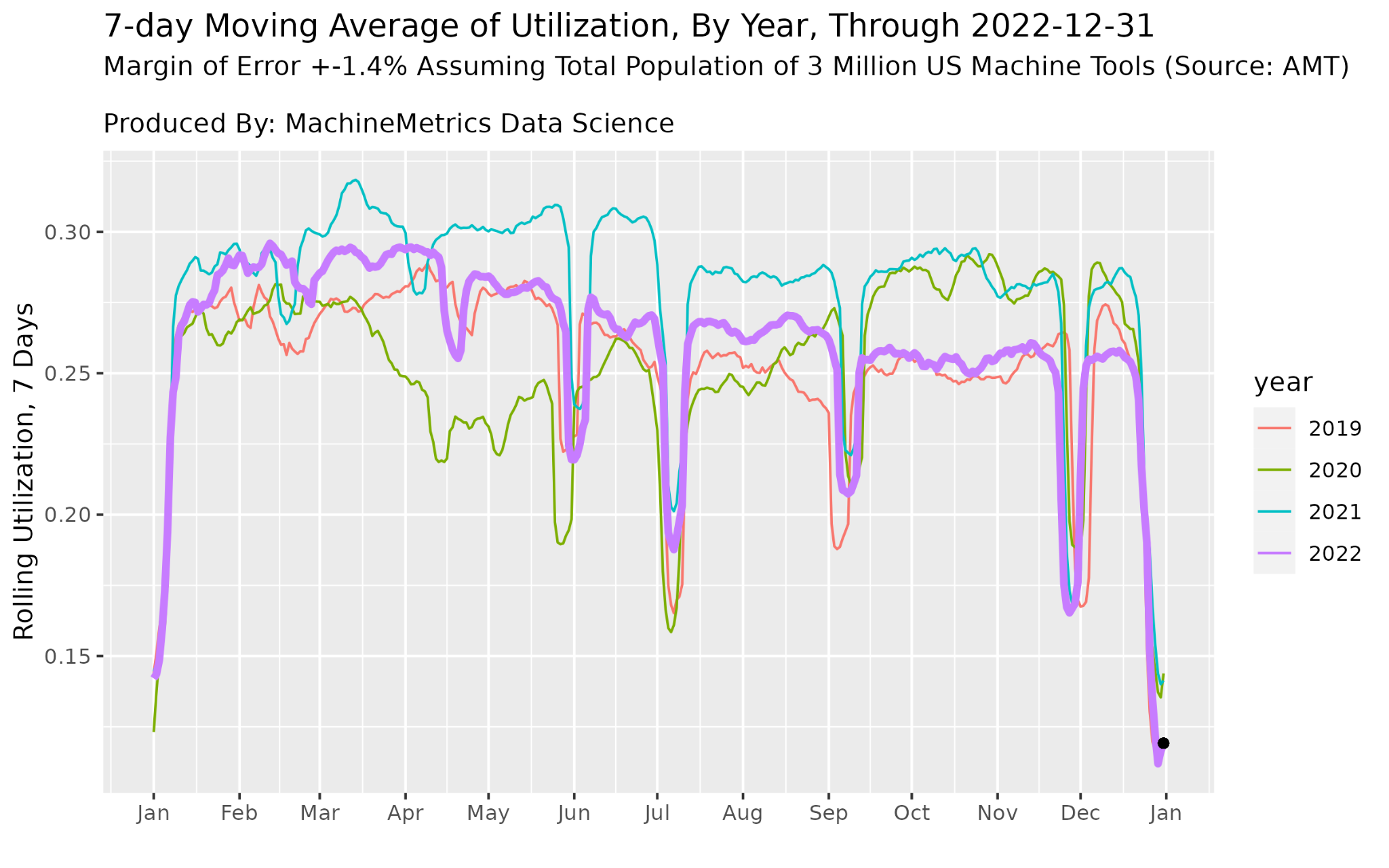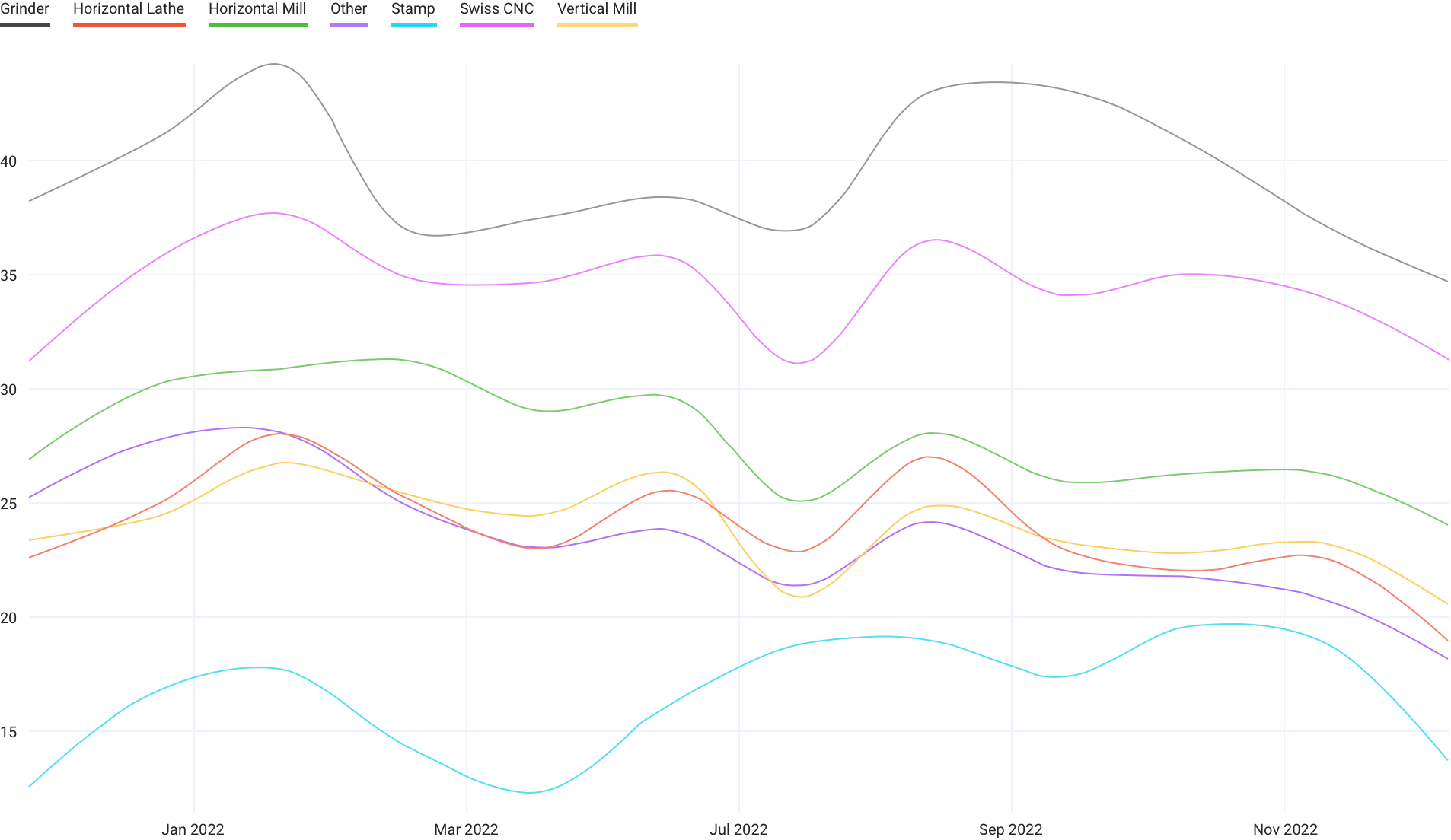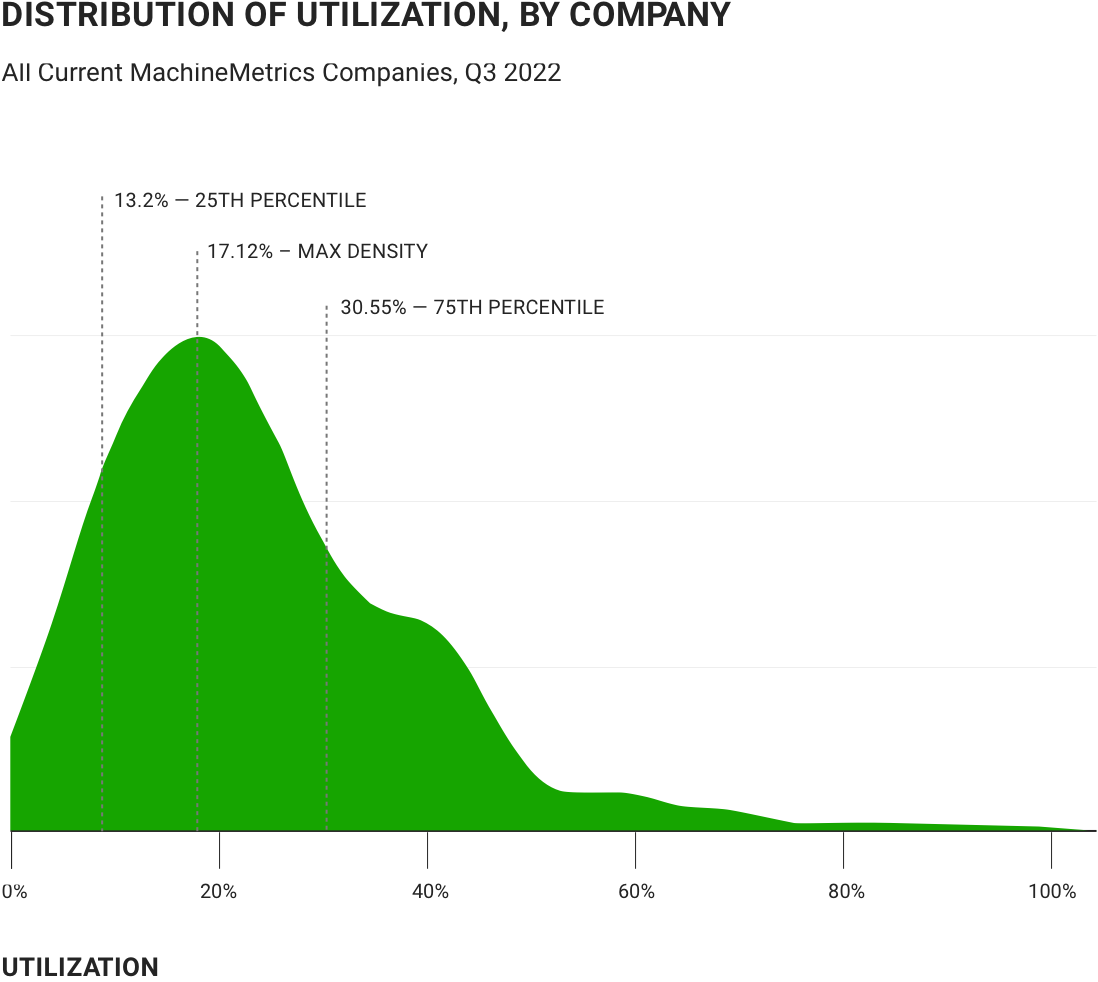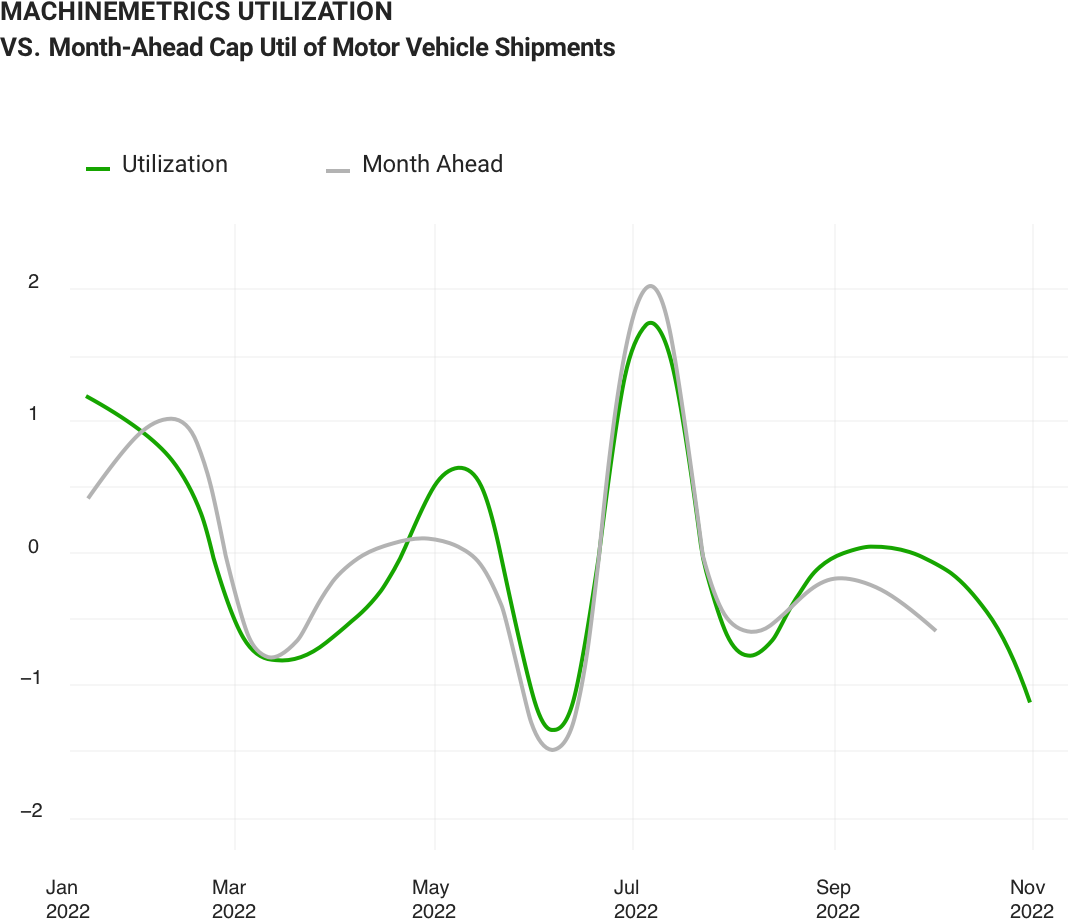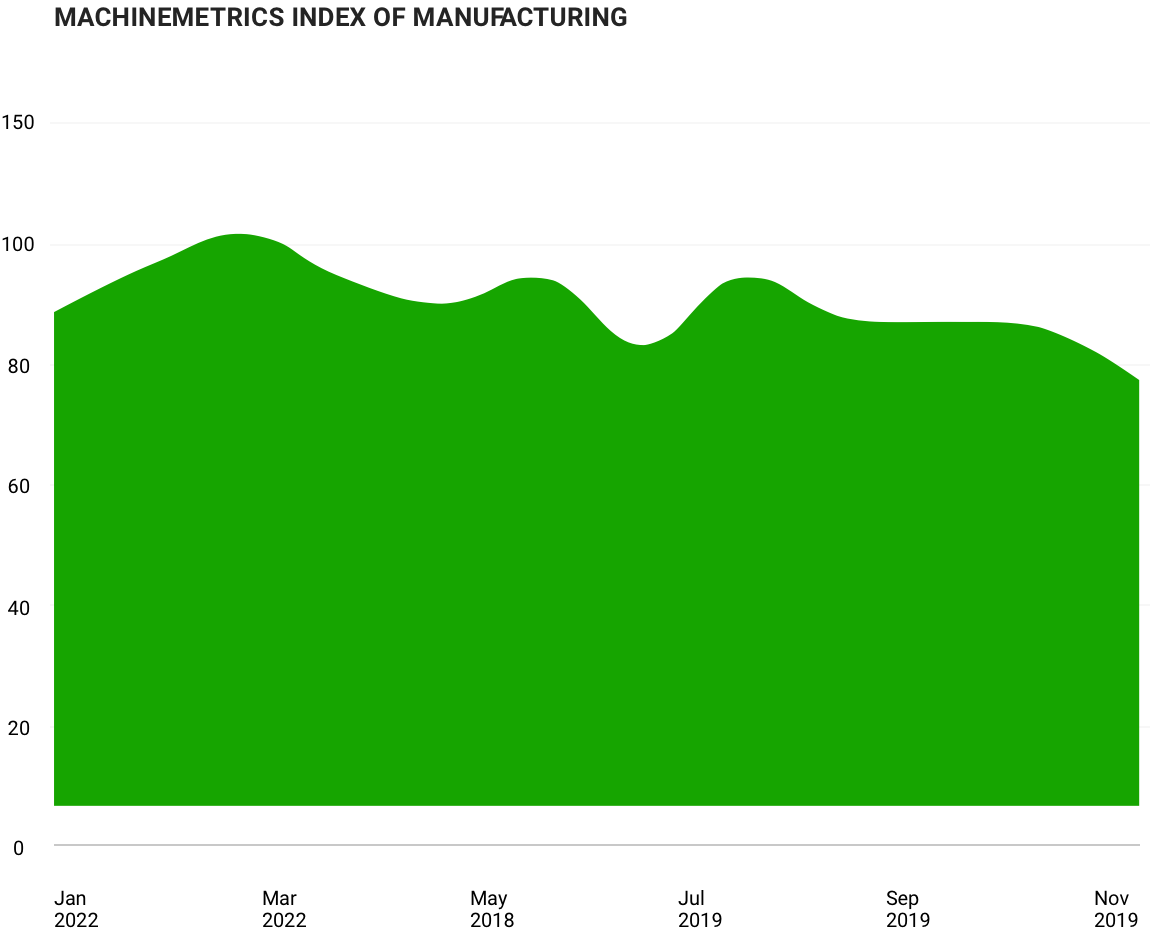For example, on some machines, if a G-Code program is running, the machine is considered active. So, if a machine has 33% utilization in a day, it means that 8 out of 24 hours the machine was actively running a program. It does not mean that the spindle was active that whole time, but rather that it was reading and executing a series of commands from a G-Code program, which may include built-in pauses, setup time, etc. If a G-Code program is interrupted or there is no program running at the time, the machine goes into an inactive state.
Another type of machine may have its active state determined by a current transducer, which is attached to the spindle power source for the machine. When the power draw exceeds a certain limit, we mark the machine as active. Pairing it with a lag factor to also include quick pauses (ex. 10 seconds), we can very closely approximate true usage of a machine based on this set of heuristics.
